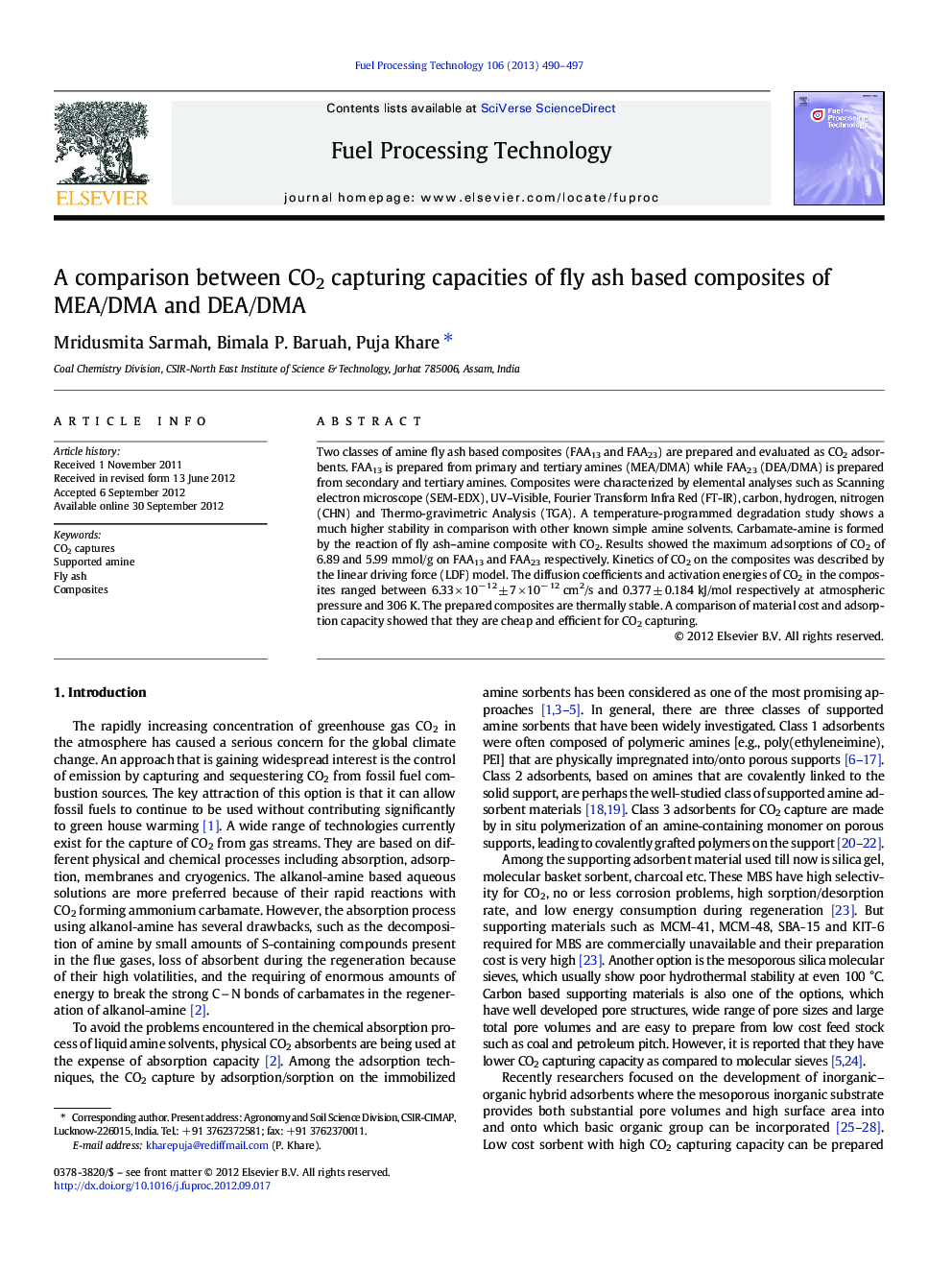| کد مقاله | کد نشریه | سال انتشار | مقاله انگلیسی | نسخه تمام متن |
|---|---|---|---|---|
| 210091 | 461697 | 2013 | 8 صفحه PDF | دانلود رایگان |

Two classes of amine fly ash based composites (FAA13 and FAA23) are prepared and evaluated as CO2 adsorbents. FAA13 is prepared from primary and tertiary amines (MEA/DMA) while FAA23 (DEA/DMA) is prepared from secondary and tertiary amines. Composites were characterized by elemental analyses such as Scanning electron microscope (SEM-EDX), UV–Visible, Fourier Transform Infra Red (FT-IR), carbon, hydrogen, nitrogen (CHN) and Thermo-gravimetric Analysis (TGA). A temperature-programmed degradation study shows a much higher stability in comparison with other known simple amine solvents. Carbamate-amine is formed by the reaction of fly ash–amine composite with CO2. Results showed the maximum adsorptions of CO2 of 6.89 and 5.99 mmol/g on FAA13 and FAA23 respectively. Kinetics of CO2 on the composites was described by the linear driving force (LDF) model. The diffusion coefficients and activation energies of CO2 in the composites ranged between 6.33 × 10− 12 ± 7 × 10− 12 cm2/s and 0.377 ± 0.184 kJ/mol respectively at atmospheric pressure and 306 K. The prepared composites are thermally stable. A comparison of material cost and adsorption capacity showed that they are cheap and efficient for CO2 capturing.
Figure optionsDownload as PowerPoint slideHighlights
► Carbamate-amine is formed by the reaction of fly ash–amine composite with CO2.
► The prepared composites are thermally stable.
► They are very much cheaper and more CO2 philic.
Journal: Fuel Processing Technology - Volume 106, February 2013, Pages 490–497